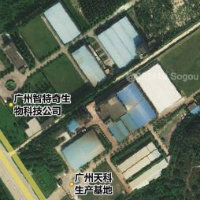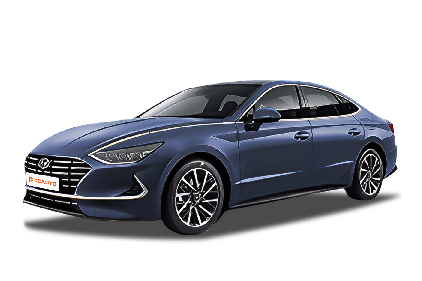Q
What is the common problem in a 2017 Hyundai Sonata?
The 2017 Hyundai Sonata may develop a few common issues over extended use. These include engine oil pump failures that trigger warning lights or cause power loss, typically linked to the pump's circuit design or insufficient lubrication after long-term use. Regular oil checks and timely changes can lower this risk. The dual-clutch transmission might exhibit slight jerking at low speeds—a common trait of this gearbox type. Keeping the software updated and sticking to regular maintenance can improve smoothness. Some owners report a creaking noise from the steering column when turning, which usually requires lubrication or replacement of the steering column universal joint to fix. Additionally, clogged sunroof drain holes leading to interior water leaks occur occasionally; regular cleaning of the sunroof tracks and drain holes prevents this effectively. Notably, if the Hyundai smart key system malfunctions, it's often due to low key battery power or nearby electromagnetic interference—simply replacing the battery or moving away from the interference source resolves the issue. These problems are closely tied to driving conditions and maintenance habits. Following the official service schedule and using genuine parts significantly extends vehicle lifespan. For complex faults, contacting an authorized service center promptly for professional diagnosis is recommended.
Special Disclaimer: This content is published by users and does not represent the views or position of PCauto.
Related Q&A
Q
How many miles will a 2017 Sonata last?
The 2017 Hyundai Sonata can typically hit 200,000 to 300,000 kilometers with regular maintenance and normal driving. Of course, its actual lifespan depends on things like driving habits, how often you service it, and the road conditions you usually face. The 2.4L and 2.0T engines under the hood are pretty solid tech-wise—keep up with regular oil changes, transmission fluid swaps, and timing belt replacements, and they’ll hold up well. For day-to-day care, I’d recommend basic service every 5,000 to 8,000 kilometers. Pay extra attention to the cooling system and transmission, too; keeping those in check really helps stretch the car’s life. If you’re looking at a used one, definitely get a pro inspection to check the engine, transmission, and chassis. These midsize sedans often last over 10 years if they’ve been taken care of. Hyundai’s durability has stepped up a lot lately, and plenty of owners say major components still work fine even after 150,000+ kilometers. Want to make it last even longer? Simple stuff like regular tire rotations, checking the brakes, and avoiding long idles go a long way. Stick with those habits, and your Sonata should keep rolling for years.
Q
What are the most common problems with a 2017 Hyundai Sonata?
Common issues with the 2017 Hyundai Sonata in local areas include difficulty starting the engine or unstable idling, which are usually related to aging ignition coils or spark plugs. Regular replacement can prevent performance degradation. Some owners have reported a slight abnormal noise from the steering system at low speeds; checking the power steering fluid and universal joint lubrication can effectively improve this. Dual-clutch transmission models may experience jerking during low-speed shifts, which is a characteristic of this type of transmission. Keeping the software updated and performing regular maintenance can optimize performance. Additionally, clogging of the sunroof drain holes leading to water leakage inside the car is also common; it is recommended to clean the drainage channels every six months. The car's electronic systems, such as the central control screen, may occasionally freeze, which can be resolved by restarting the system or updating the software. It's worth noting that while Hyundai's GDi engine technology improves fuel efficiency, it has higher requirements for fuel quality. Using standard-compliant gasoline can reduce carbon deposit issues. The car paint is prone to sun marks in tropical climates; regular waxing can extend the life of the paint finish. Overall, most of these issues fall into the category of regular maintenance, and timely servicing and using genuine parts are key.
Q
How much does it cost to replace an engine in a 2017 Hyundai Sonata?
The cost to replace the engine in a 2017 Hyundai Sonata typically ranges from RM15,000 to RM35,000. The exact price depends on the type of engine (brand-new OEM, remanufactured, or used), labor charges, and the repair shop's qualification. Authorized 4S dealerships will charge more but offer a warranty, while third-party workshops might be more affordable—just make sure to verify the source of their parts. If the common 2.4L GDi or 2.0L turbo engines fail due to low oil or overheating, it’s a good idea to inspect both the cooling and lubrication systems during repairs to prevent secondary issues. If you’re on a tight budget, a reputable remanufactured engine could work, but keep in mind Southeast Asia’s hot and humid climate can affect engine durability. Regular maintenance, especially timely oil and filter changes, can significantly extend the engine’s lifespan.
Q
Does the 2017 Hyundai Sonata have an engine recall?
Yes, the 2017 Hyundai Sonata was indeed part of an engine-related recall, primarily targeting potential issues with the Theta II GDI engine. These issues include possible metal debris from the manufacturing process causing bearing wear, which could lead to engine failure or even stalling. The manufacturer offered free inspections and repairs for this. Recalls like this aren't unique to the Sonata; many brands have issued recalls over engine or component concerns—it's a standard industry practice to ensure consumer safety. I'd advise owners to check their specific recall status by entering their Vehicle Identification Number (VIN) through official channels, and if eligible, schedule a service appointment promptly. In regular maintenance, keeping an eye on oil condition and listening for unusual engine noises can help catch potential problems early. Also, make a habit of checking manufacturer announcements to keep your vehicle up to date with the latest safety standards. Hyundai's after-sales service network usually handles these recalls efficiently, so owners don't need to worry too much.
Q
How long does a Hyundai Sonata 2017 last?
A 2017 Hyundai Sonata can typically hit 200,000 to 300,000 kilometers or more with regular maintenance and sensible driving. Its lifespan really hinges on how often you service it, your driving habits, and the road conditions it's exposed to. Under the hood, the 2.0L and 2.4L naturally aspirated engines are pretty tried-and-true, paired with a 6-speed automatic transmission that’s known for reliability. Staying on top of oil changes, transmission fluid swaps, and timing belt replacements will definitely help it go the distance. The body rust protection holds up okay in tropical climates, but it’s smart to check the undercarriage and paint regularly to prevent corrosion from damp environments. The electronics are generally stable, though you’ll want to keep an eye out for wiring issues as the car ages. Daily driving should avoid rough stuff—like jackrabbit starts and hard braking—since that just wears out the mechanicals faster. On the used market, a 2017 Sonata with a complete service history still offers solid value. If you’re planning to keep it long-term, aim for one with lower mileage and no major accident history. Among its peers, properly maintained Japanese cars usually match its durability, but the Sonata does edge them out a bit in terms of sound insulation and features.
Q
How much is a 2017 Sonata worth?
Used 2017 Hyundai Sonatas typically range in price from 60,000 to 90,000 Malaysian Ringgit, depending on factors like condition, mileage, trim level, and service history. The base 2.0L models sit at the lower end of that spectrum, while higher-spec 2.4L or turbocharged versions can push closer to the top. This midsize sedan is known for its spacious interior and generous features – some models come with a panoramic sunroof, smart key access, and advanced driver assistance systems. It also delivers solid fuel economy, keeping daily running costs affordable. When shopping for a used one, make sure to check the engine and transmission condition closely, verify that the regular service records are complete, and consider getting a third-party inspection to assess the car's true state. If you're looking at alternatives in the same class, the Toyota Camry and Honda Accord are worth comparing too – they're also renowned for reliability, though they might carry a slightly higher price tag.
Q
Is a 2017 Hyundai Sonata SE a reliable car?
The 2017 Hyundai Sonata SE sits above average for reliability. Under the hood, its 2.4L GDI four-cylinder engine paired with a 6-speed automatic transmission is solid tech—power delivery is smooth enough for daily driving. Owners generally report fewer issues than the class average; most problems are minor electronic glitches, like occasional stereo or Bluetooth hiccups. Major repairs on the powertrain or chassis are rare, and maintenance costs are reasonable too.
Safety-wise, it’s well-equipped with standard 6 airbags and stability control, scoring IIHS’s "Top Safety Pick" rating. Just a heads-up: some early builds had a recall for transmission sensor issues, so definitely check the service history with the VIN before buying. Hyundai’s warranty is a big plus here—5 years/unlimited miles covers most core components, which is great for peace of mind.
If you’re looking at a used one, pay extra attention to how smoothly the transmission shifts and listen for any engine odd noises. Also, keeping up with transmission fluid changes will help it last longer. Compared to rivals, it’s more reliable than some American models, though it still trails Japanese competitors slightly in long-term durability. Overall, it’s a solid pick if you’re on a budget but need a midsize sedan.
Q
What is the life expectancy of Hyundai Sonata Hybrid?
The service life of the Hyundai Sonata Hybrid can vary depending on multiple factors. Generally speaking, the battery of the Sonata Hybrid usually lasts about 5 years. As for other components, Hyundai offers a 5 - year or 300,000 - kilometer warranty for the whole vehicle, which reflects the expected durability of the vehicle under normal use conditions. The warranty periods for some core components, such as the power battery assembly, drive motor assembly, motor controller assembly, and vehicle controller assembly, are even longer, sometimes up to 8 years or 150,000 kilometers. Regular maintenance, good driving habits, and usage conditions all play important roles. If properly maintained, serviced on time, and driven carefully, this car has the potential to serve you for over 10 years and cover a mileage of as much as 200,000 kilometers or more.
Q
Which model of Hyundai Sonata is the most expensive ?
Currently, the most expensive model of Hyundai Sonata in Malaysia is the Sonata N-Line version, with an official price of approximately RM218,888 (excluding insurance). This high-performance version is equipped with a 2.5L Turbo GDi four-cylinder engine, capable of outputting 290 horsepower and 422 Nm of torque. Paired with an 8-speed wet dual-clutch transmission and front-wheel drive, it can accelerate from 0 - 100 km/h in just 6.2 seconds.
Compared with the standard Sonata (equipped with a 1.6L Turbo or 2.0L naturally aspirated engine), in addition to its powerful performance, the N-Line is equipped with a sport-tuned suspension, 19-inch wheels, an exclusive N Line exterior kit (including a more aggressive aerodynamic design and quad exhaust pipes), and an all-black interior with red stitching, giving it an overall sporty coupe style.
Although it's price is high, the N-Line version offers a comprehensive configurations, including the advanced Hyundai SmartSense active safety system (such as SCC Smart Cruise Control and FCA Forward Collision Warning), a panoramic sunroof, and a Bose sound system. It's a great choice for consumers who seek both performance and luxury.
Q
How about the speed performance of Hyundai Sonata?
The speed performance varies among different models of the Sonata. The top speed of the 2020 Hyundai Sonata 2.5 Premium can reach 210 km/h, while the top speeds of the 2017 Hyundai Sonata 2.0 Elegance and Hyundai Sonata 2.0 Executive are 200 km/h. These figures reflect the vehicle's potential in terms of power performance. However, in actual driving, it's difficult to reach the vehicle's top speed due to factors such as road conditions, traffic regulations, and driving behavior. For example, the speed limits on ordinary city roads are usually quite low. Although the speed limits on highways are relatively higher, it's not allowed to speed at will. It is recommended that everyone abide by the regulations while driving, reasonably control the speed according to the actual situation, and ensure driving safety.
Latest Q&A
Q
How many miles will a 2017 Sonata last?
The 2017 Hyundai Sonata can typically hit 200,000 to 300,000 kilometers with regular maintenance and normal driving. Of course, its actual lifespan depends on things like driving habits, how often you service it, and the road conditions you usually face. The 2.4L and 2.0T engines under the hood are pretty solid tech-wise—keep up with regular oil changes, transmission fluid swaps, and timing belt replacements, and they’ll hold up well. For day-to-day care, I’d recommend basic service every 5,000 to 8,000 kilometers. Pay extra attention to the cooling system and transmission, too; keeping those in check really helps stretch the car’s life. If you’re looking at a used one, definitely get a pro inspection to check the engine, transmission, and chassis. These midsize sedans often last over 10 years if they’ve been taken care of. Hyundai’s durability has stepped up a lot lately, and plenty of owners say major components still work fine even after 150,000+ kilometers. Want to make it last even longer? Simple stuff like regular tire rotations, checking the brakes, and avoiding long idles go a long way. Stick with those habits, and your Sonata should keep rolling for years.
Q
What are the most common problems with a 2017 Hyundai Sonata?
Common issues with the 2017 Hyundai Sonata in local areas include difficulty starting the engine or unstable idling, which are usually related to aging ignition coils or spark plugs. Regular replacement can prevent performance degradation. Some owners have reported a slight abnormal noise from the steering system at low speeds; checking the power steering fluid and universal joint lubrication can effectively improve this. Dual-clutch transmission models may experience jerking during low-speed shifts, which is a characteristic of this type of transmission. Keeping the software updated and performing regular maintenance can optimize performance. Additionally, clogging of the sunroof drain holes leading to water leakage inside the car is also common; it is recommended to clean the drainage channels every six months. The car's electronic systems, such as the central control screen, may occasionally freeze, which can be resolved by restarting the system or updating the software. It's worth noting that while Hyundai's GDi engine technology improves fuel efficiency, it has higher requirements for fuel quality. Using standard-compliant gasoline can reduce carbon deposit issues. The car paint is prone to sun marks in tropical climates; regular waxing can extend the life of the paint finish. Overall, most of these issues fall into the category of regular maintenance, and timely servicing and using genuine parts are key.
Q
How much does it cost to replace an engine in a 2017 Hyundai Sonata?
The cost to replace the engine in a 2017 Hyundai Sonata typically ranges from RM15,000 to RM35,000. The exact price depends on the type of engine (brand-new OEM, remanufactured, or used), labor charges, and the repair shop's qualification. Authorized 4S dealerships will charge more but offer a warranty, while third-party workshops might be more affordable—just make sure to verify the source of their parts. If the common 2.4L GDi or 2.0L turbo engines fail due to low oil or overheating, it’s a good idea to inspect both the cooling and lubrication systems during repairs to prevent secondary issues. If you’re on a tight budget, a reputable remanufactured engine could work, but keep in mind Southeast Asia’s hot and humid climate can affect engine durability. Regular maintenance, especially timely oil and filter changes, can significantly extend the engine’s lifespan.
Q
Does the 2017 Hyundai Sonata have an engine recall?
Yes, the 2017 Hyundai Sonata was indeed part of an engine-related recall, primarily targeting potential issues with the Theta II GDI engine. These issues include possible metal debris from the manufacturing process causing bearing wear, which could lead to engine failure or even stalling. The manufacturer offered free inspections and repairs for this. Recalls like this aren't unique to the Sonata; many brands have issued recalls over engine or component concerns—it's a standard industry practice to ensure consumer safety. I'd advise owners to check their specific recall status by entering their Vehicle Identification Number (VIN) through official channels, and if eligible, schedule a service appointment promptly. In regular maintenance, keeping an eye on oil condition and listening for unusual engine noises can help catch potential problems early. Also, make a habit of checking manufacturer announcements to keep your vehicle up to date with the latest safety standards. Hyundai's after-sales service network usually handles these recalls efficiently, so owners don't need to worry too much.
Q
How long does a Hyundai Sonata 2017 last?
A 2017 Hyundai Sonata can typically hit 200,000 to 300,000 kilometers or more with regular maintenance and sensible driving. Its lifespan really hinges on how often you service it, your driving habits, and the road conditions it's exposed to. Under the hood, the 2.0L and 2.4L naturally aspirated engines are pretty tried-and-true, paired with a 6-speed automatic transmission that’s known for reliability. Staying on top of oil changes, transmission fluid swaps, and timing belt replacements will definitely help it go the distance. The body rust protection holds up okay in tropical climates, but it’s smart to check the undercarriage and paint regularly to prevent corrosion from damp environments. The electronics are generally stable, though you’ll want to keep an eye out for wiring issues as the car ages. Daily driving should avoid rough stuff—like jackrabbit starts and hard braking—since that just wears out the mechanicals faster. On the used market, a 2017 Sonata with a complete service history still offers solid value. If you’re planning to keep it long-term, aim for one with lower mileage and no major accident history. Among its peers, properly maintained Japanese cars usually match its durability, but the Sonata does edge them out a bit in terms of sound insulation and features.
View MoreRelated News

In Malaysia, which sliding door MPVs are available?
MichaelOct 30, 2025

Modern Ioniq 5 N Lands in Malaysia: Track-Level Performance Electric Vehicle is Here, Priced Possibly Below RM 400,000?
JohnSep 10, 2025

Hyundai's Big Return to Malaysia: Top 5 Models Expected
MichaelMay 30, 2025

580,000 km & 87.7% Battery Health: Ioniq 5’s Incredible Durability
MichaelMay 6, 2025

Revolutionizing Hybrids: Hyundai’s New System vs. Toyota's Hybrid System
Kevin WongApr 22, 2025
View More











Pros
Cons